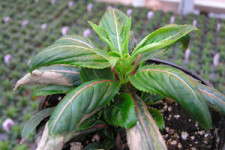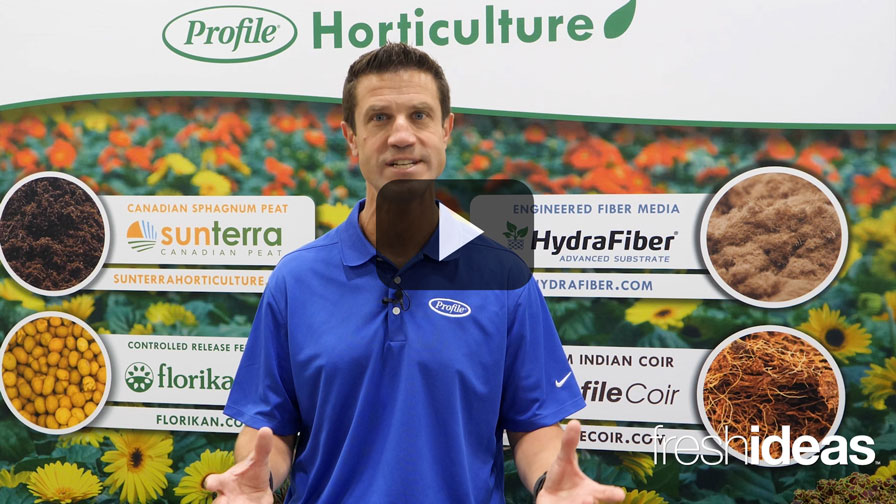Understanding Plant Nutrition: Common High Media-EC Problems

High electrical conductivity (EC) in the growing medium makes it harder for roots to take up nutrients and water–it is like trying to grow plants in sea water and can result in “salt burn” (damage to sensitive root tips) and toxicity symptoms in foliage (Figure 1). In this article, we will discuss the causes and corrections of high media-EC.
What Causes High Media-EC?
Media-EC is a measure of the total dissolved salt concentration contained in the soil solution and is often used as a measure of the overall nutrition status of the crop. You can think of the soil nutrient level as similar to a bank account. Our account balance (media-EC) is made up of deposits and withdrawals. The deposits are made with salts contained in the irrigation water, with water-soluble fertilizer, or by slowly soluble or controlled-release nutrients. Withdrawals are made through plant uptake or leaching.
The account balance (media-EC) increases when deposits are greater than withdrawals. This can occur for a number of reasons, including too much starter fertilizer at mixing, using high fertilizer concentrations for extended periods of time when the leaching rate is low, or using a high incorporation rate of controlled-release fertilizer when the leaching rate is low. Plants also require (and “withdraw”) less fertilizer from the growing medium early in the crop when they are small, or late in the crop when growth rates decrease at flowering.
Correcting High Media-EC
The recommendations for removing fertilizer salts from the media depend on the causes of the problem. When media-EC is excessive, find out which salts are contributing to the high media-EC with a laboratory soil test. This will influence the corrective actions needed.
For example, if the salts contained in the media are made up of a balanced ratio of plant nutrients (containing nitrogen, phosphorus and potassium) and you are using a water-soluble fertilizer, then switching to clear water until the media-EC drops to a more acceptable level may be all that is necessary. In this case, you can use plant uptake to reduce the media-EC. If the media-EC is very high or the salt levels still don’t come down, apply excess water with 50 percent-plus leaching as the next option.
If the salts are made up of a balanced ratio of plant nutrients and you are using a controlled-release fertilizer, you should apply excess clear water with 50 percent-plus leaching. Controlled-release fertilizer cannot be turned off like a fertilizer injector, so if media-EC gets too high when using controlled-release fertilizer, leaching becomes the only option for salt removal. In addition, you may have to continue with higher-than-normal leaching rates to keep the salts from building up again during the crop.
If the high media-EC is from unusable ions such as sodium or chloride, then you should leach twice, once with clear water to remove the excess salt, and a second time with a complete fertilizer to reestablish adequate nutrition in the pot.
Avoiding High Media-EC
Avoiding over-fertilization is an important part of managing micronutrient concentrations. Most growers are using fertilizers (both controlled release and water soluble) that contain both macronutrients (e.g. nitrogen, phosphorus and potassium) and micronutrients (e.g. iron and manganese). As the concentration of nitrogen in the fertilizer solution increases, the concentration of all nutrients increases, including micronutrients like iron and manganese. For example, increasing the concentration of one brand of 20-10-20 from 100 ppm nitrogen to 400 ppm nitrogen will increase the concentration of iron from 0.5 ppm to 2.0 ppm in the applied solution.
Conclusion
The goal of any nutrition program is to supply nutrients to the root media at a similar rate to those taken up by the plant. Leaching can play a key role when the media-EC gets too high, because it can be controlled by the grower. If you find you constantly have to leach the crop because of high salts, you may need to re-evaluate the fertilizer concentration or incorporation rate being used.









